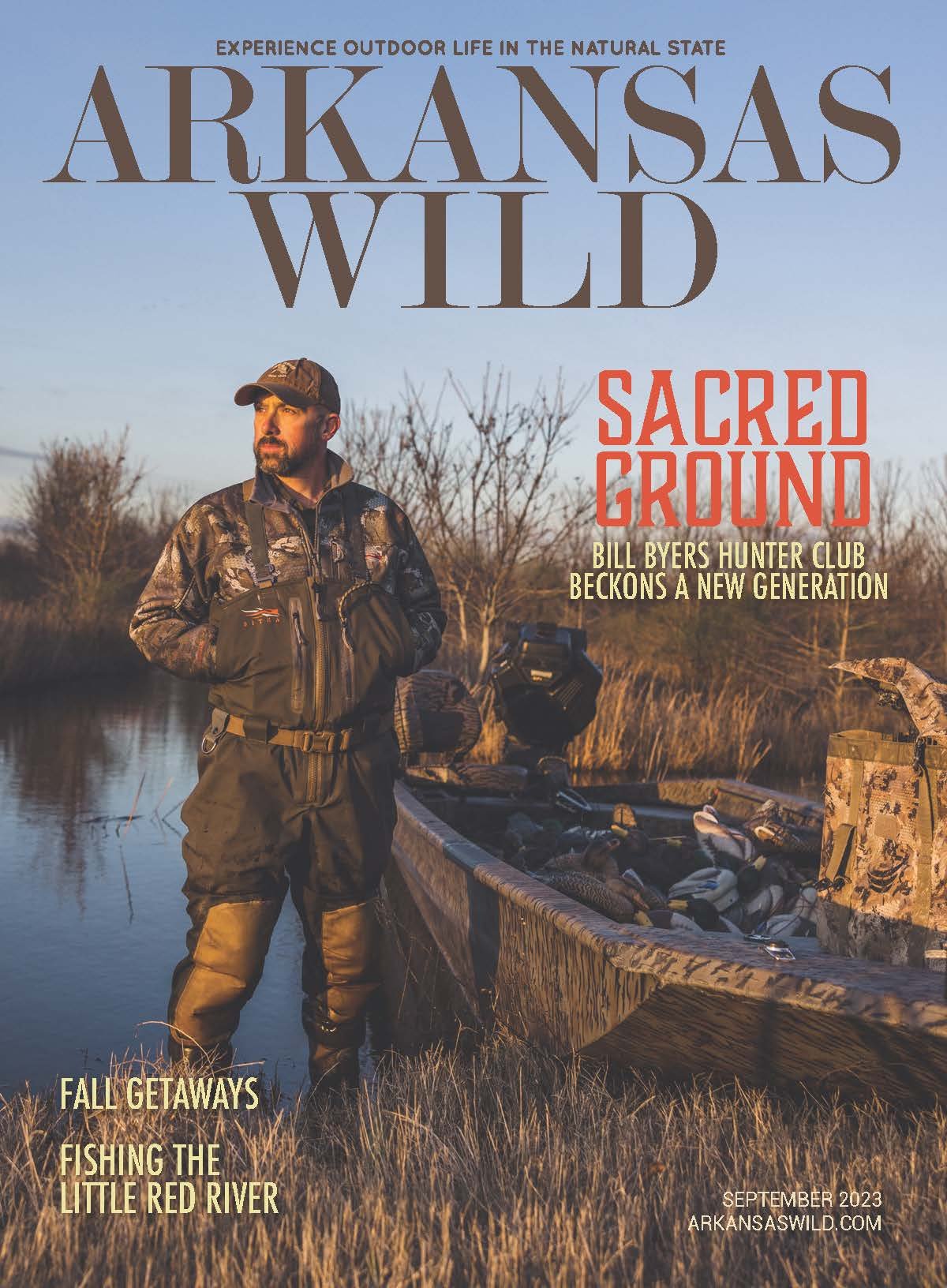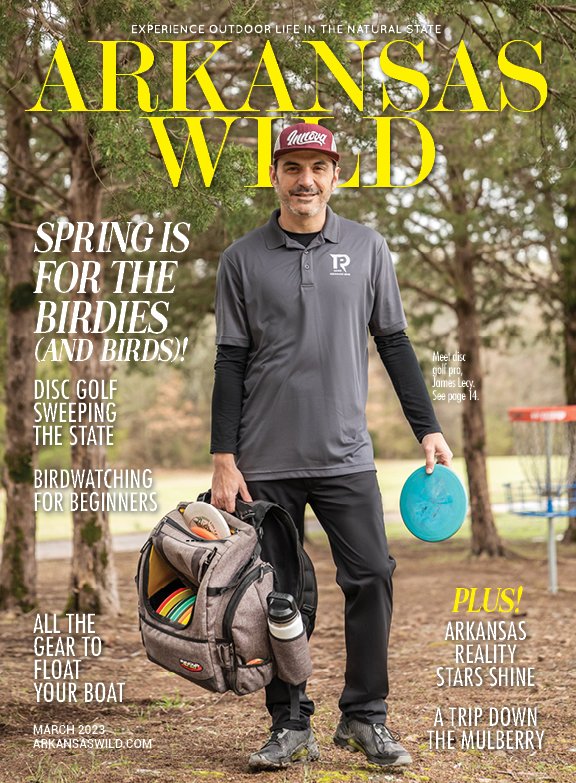Floating the BuffaloThe Buffalo National River area offers water, hikes and historical sites
By Tim Scott and Michael Roberts
Our gear lay in a neat pile outside a log cabin in the woods. There was a sisal beach bag with towels, sunscreen, Doritos and Ritz crackers; two small dry bags; a small fishing tackle bag; four spinning rods; and a well-used 30-quart ice chest. Inside the cooler, next to a block of ice, was a water jug, a container of homemade pimiento cheese, and three zip-seal bags stuffed with smoked ham, summer sausage and cheese from Coursey’s.
My family judged these provisions adequate to meet our needs during a six-mile float down a river that has been called Arkansas’ gift to the world. With this heap of stuff, one another’s company and the sublime scenery of the Buffalo National River, we had everything we needed – except boats.
They arrived a few minutes later when a long white van pulling a canoe trailer rattled to a stop on the gravel beyond the driveway. Two young men from Buffalo River Outfitters hopped out and the driver approached with an outstretched hand.
“It’s a great day to be on the river,” he said.
It wasn’t a sales pitch. It was the last day of July, but the temperature held in the 60s at 9 a.m. The humidity was negligible; it didn’t feel like Arkansas.
Fifteen minutes later our feet were wet. After a shuttle to Tyler Bend, we situated our gear in two canoes. My daughter and granddaughters picked the blue one. They were 50 yards downstream before my wife and I put water under our red boat.
I considered the elegant efficiency of a canoe as ours sliced through the first emerald pool, but I lost the thought when I looked up to the left at a giant limestone bluff and felt small.
This float trip was a long time in the making. It was supposed to happen right after Memorial Day last year, when my daughter traveled to Arkansas from southern California with a Buffalo float trip on her itinerary. But Mother Nature had other plans. Heavy rainfall turned the river into a torrent. Gravel bars and swimming holes disappeared under muddy water. There wasn’t any floating or river play in our future.
Float trips are the main attraction for the Buffalo National River’s nearly 1.5 million visitors each year, but they’re not the only draw. Instead of lamenting river levels and bad luck, we put some miles on my truck, as well as our shoes.
Although not technically a national park, the Buffalo National River is run by the National Park Service, which maintains campgrounds, historical sites, trails and, at Tyler Bend, a visitor’s center that provides a thorough introduction to the country’s first national river. From there, we turned to hiking trails, historic sites and waterfalls.
With two young children in tow, we hit the .6-mile Collier Homestead Trail at Tyler Bend. Solomon “Sod” Collier and his family settled 40 acres in 1927 and later became one of the area’s last settlers to acquire land under the 1862 Homestead Act. Their restored home place offers a glimpse into the area’s hardscrabble history. Beyond, the house, the trail winds past fields of wildflowers and native grasses before entering a wooded landscape and tracing a bluff line that offers spectacular views of the Buffalo, as well as sprawling pastures, where keen eyes might spot whitetails and elk grazing along the edges.
The recent deluge also made it a good day to chase waterfalls. We drove west through the Springfield Plateau toward the upper part of the Buffalo, where the river falls out of the Boston Mountains at a steeper gradient. At the end of one of the upper section’s shortest hiking trails is Twin Falls.
It’s a brake-burning, two-mile descent from Mount Sherman down to the trailhead next to Camp Orr near Kyle’s Landing. But that’s the hardest part of the trip. It’s just 75 yards to the base of the falls. When we found them, swollen by rain, they spilled over the rocky shelf in three cascades.
Our only concern about water in July was the potential lack of it, but a wet summer left the Buffalo’s middle section with ample water. Despite a lazy flow, we didn’t have to drag over shallow riffles, and the languid pace made it easier to fish.
The smallmouth bass is the undisputed ruler of the Buffalo’s underwater realm. In the deeper pools and runs with jumbles of rocks, they lie in wait for crawfish and other prey as they wash downstream. If you’re lucky, they’ll sometimes grab hold of plastic facsimiles. Despite a lengthy love affair with Ozark smallmouth, I’m still surprised at their strength every time I hook one.
But a self-absorbed smallmouth aficionado does not always make a good companion on a family float trip. So I played in the water a lot. We stopped three times before reaching the Highway 65 Bridge and the popular swimming hole at Grinder’s Ferry. Just around the bend at Shine Eye, we beached our canoes on a limestone slab under a natural shelter and spent an hour jumping off boulders into the river. We floated in our life jackets and bobbed through riffles and acted like we still had gills.
We covered six river miles in about six hours despite frequent sojourns, and I learned things about our family and the river. The nine-year-old granddaughter was a quick study and handles a canoe paddle well, but she’ll abandon ship when spiders drop into the boat from a leaning tree. Her six-year-old sister lacks fear and will charge into unknown outcomes. Sometimes there’s no antidote for sibling rivalry. You don’t want to hurry on the river, but neither do you want to tarry. Words don’t seem adequate to describe the Buffalo. We are all small.







